During the last month I have always been asked a lot about how it is to walk for 3,000km and what I took on the five month hike. Since many people also asked for advise I thought I put down some of my ideas, experiences and finally the gear which I am using, how and why.
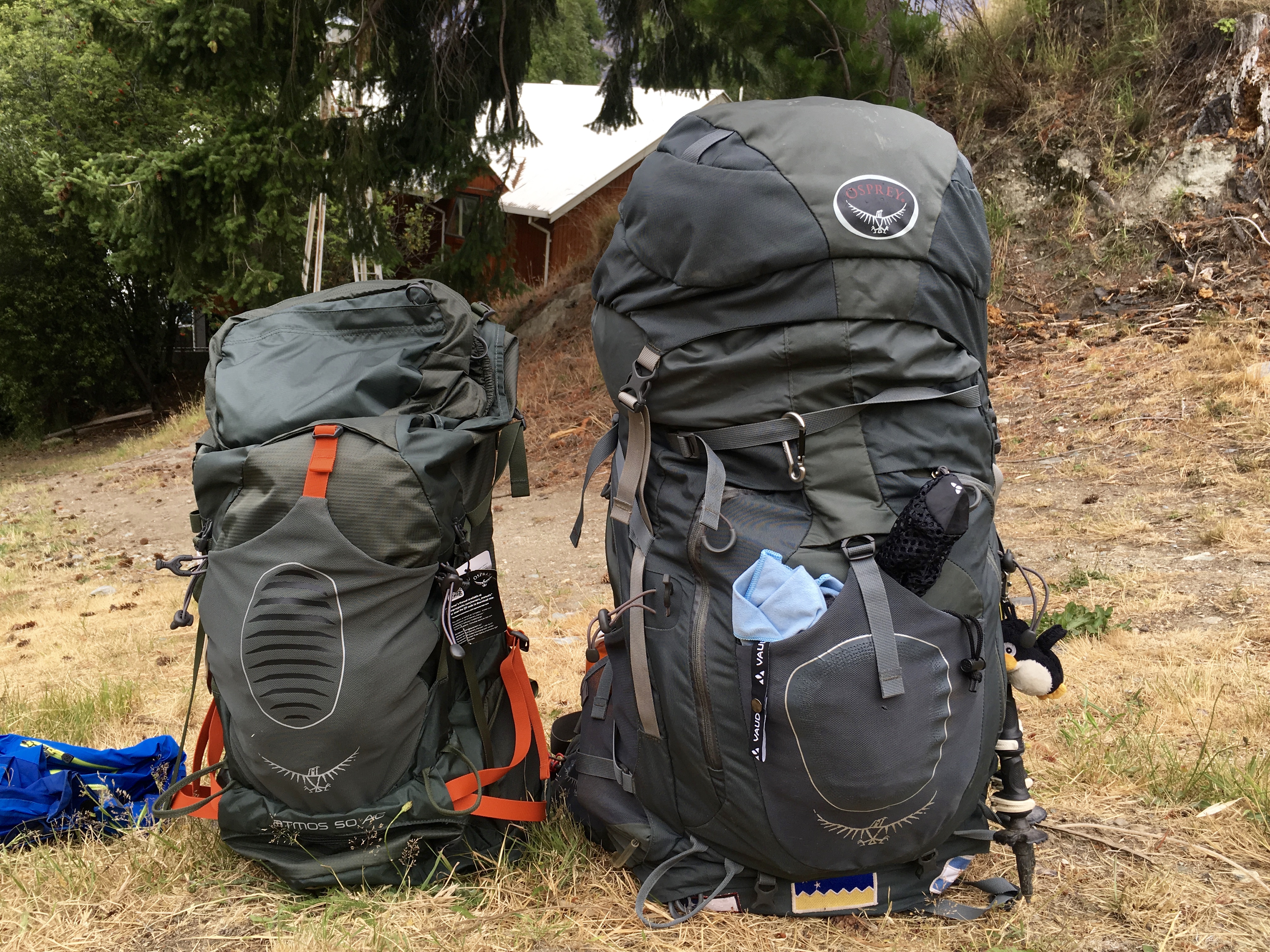
To begin with – in NZ I started out with a 75l backpack and about 16,5kg base weight. Without food and water and everything that was in the bag. I was prepared for many worst case scenarios and also carried stuff which I would never take again. Why? Because I actually did not need them, the benefits did not justify the additional weight or/and my comfort zone had shifted to a point were I was comfortable not to take it anymore. Over the days and weeks on the trail I realised how little I needed, how painful every gram was uphill and how much more chocolate I was able to carry with less weight and more space in the backpack – and chocolate makes you happy!!! 😊
I went down in weight and volume in two big stages. First one was after about three weeks where I changed my backpack to a 50l one, changed my tent and cooker and got rid of a lot of stuff. And after the trail I changed again to a very lightweight backpack with 45l, got rid of more equipment and changed some gear for lighter or smaller one. Now my baseweight is less then 6kg – this includes my backpack, tent, sleeping bag, sleeping mat, stove & pot, cloth, medic & hygiene-kit, repair and safety equipment. It has been a massive transformation but the joy on each and every uphill slope is just amazing with 10kg less! And another big advantage of being lighter is – you are a lot faster. By being faster you can also manage to cover greater distances, needing less time and with this again carrying less food. So there are many advantages not to overpack…

What to pack?
First of all, everybody has a different comfort zone! So there is no right or wrong.
Every environment is different and requires different equipment!
You should never risk your health or even life by underpacking and not being prepared!
The main questions to consider are usually:
What weather will I have to expect? What will be the lowest temperatures?
How remote will I be and how quickly can I escape or receive help in an emergency situation?
This will determine a lot when it comes to the right equipment. The big three are usually your backpack itself, the tent and the sleeping bag. Tent and sleeping bag will depend on the conditions – how stable does the tent have to be (e.g. very stable in Patagonia with a lot of wind and no shelter, less in New Zealand where you can usually camp in the forest and have shelter) and how warm and big does your sleeping bag (and with this usually also the cloth) have to be. By volume and size of all these things you will be able to choose a backpack.
Backpack:
Most important with a backpack is that it fits your back. They all have different harnesses and fit different backs. So make sure to try many. The other features are less important. If you carry heavier loads >15kg you want to have a good hip belt or otherwise you will have bruises on your hips and it’s uncomfortable on longer hikes.
I have two Osprey backpacks (Xenith 75l, Atmos 50l) which I really like for their comfort (hip belt and ventilation) when it’s heavier. But my normal hiking backpack is now my Hyperlite Mountain Gear 2400 Southwest. It’s specially designed for ultra-light hikers and only weighs 800 grams (in comparison my Osprey 50l bag weighs about 1,8kg!) and it is waterproof in itself. I would not recommend it with a permanent weight over 12kg, but if you exceed it in the first days of a long hike because of food it should be ok since you will get lighter every day.

Tent:
First of all I prefer a tent over a tarp only. On long hikes with long stretches and the possibility of consecutive days of rain I prefer to have a dry spot at night. Especially since I don’t carry a lot of spare cloth or rain protection and I usually do get wet during the day. So I really need to stay dry and warm in the night – but that’s me. And the difference between a tarp and mosquito protection to my tent is not that much anymore.
I am a big fan of my two Hilleberg tents (Allak & Soulo) which are designed for harsh conditions. I had my Allak pitched at around 100km wind one night with little shelter and different to my neighbours who’s tent-poles broke I was fine. But the stability has it’s price – weight! They are extremely light for what they can do but the Soulo still weighs around 2,5kg.
Therefore I changed to a MSR Hubba NX Solo which only weighs 1.12kg with good stability.
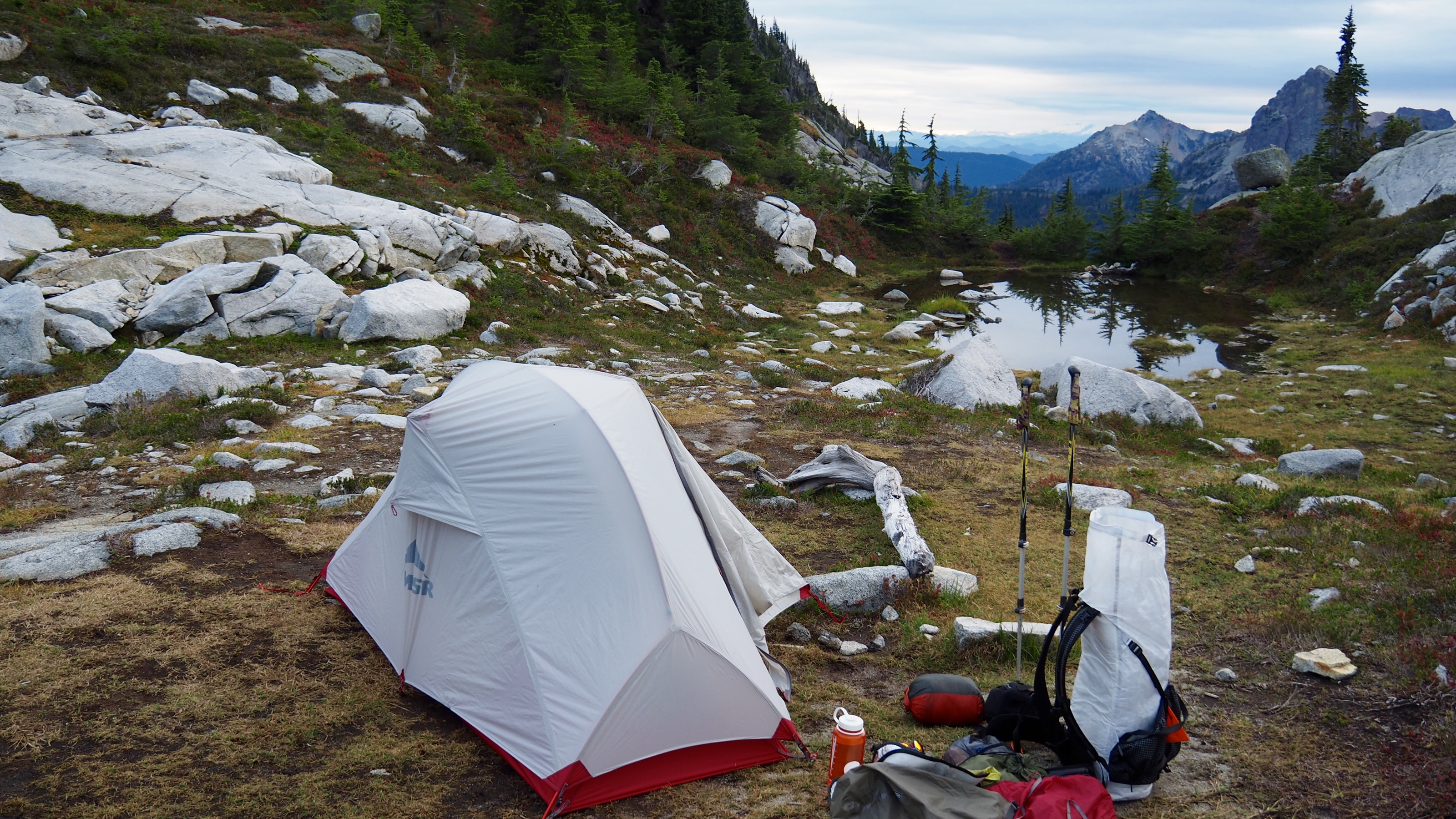
Sleeping bag & sleeping mat:
The lightest and smallest version is always down. The higher the number of the filling (e.g. 850) the better the quality of the down and therefore the less you need for the same insulation. I go with a Western Mountaineering sleeping bag which is rated for +6C comfort and a max of 0C. I have already used it down to -5C and just left my t-shirt and thermal pants on in the night and it was fine. I have also used my rain jacket and/or my backpack as a sack wrapped around my feet for extra insulation in cold nights – just make use of whatever you have if you need it. It weighs a bit more than 500 gr. and packs extremely small – maybe 3l. I also always use a silk liner (120 gr.) to protect the sleeping bag from oil and fat and it gives a bit more of insulation if I need it in cold nights. The problem with down is if they get wet once or even worth contaminated with oil they clump up and the insulation is gone. Therefore the 120 gr. for me is a good investment on a long trail when I have no chance to professionally clean the sleeping bag.
Due to packing size I opted for an inflatable sleeping mattress. I am not a fan of the bulky foam pads which you always have to attach to the outside dangling around. The Thermarest NeoAir XLite is my choice since it is light and through the air chamber also gives the best possible insulation from the ground.
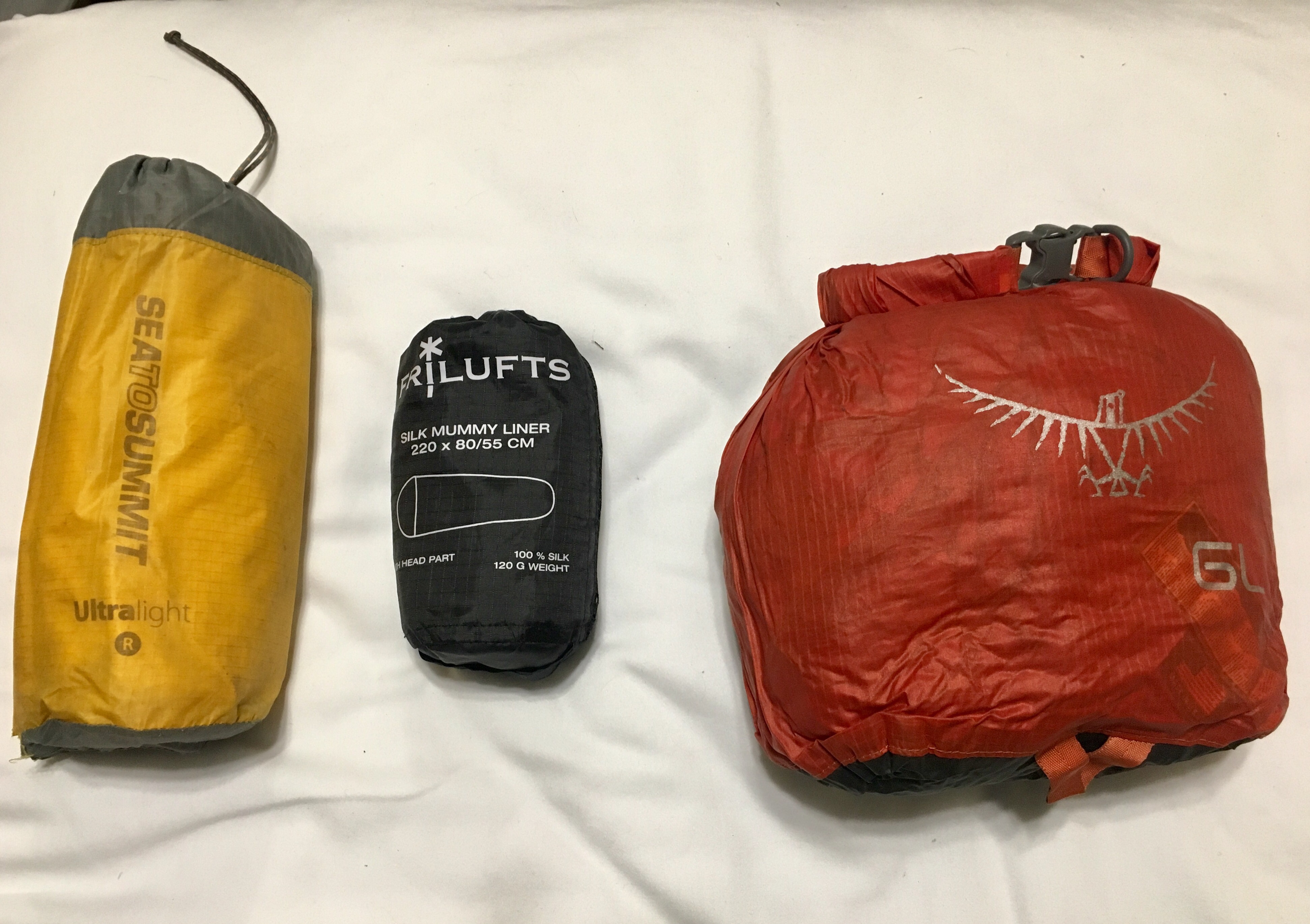
Cooking:
I carry a very small and light weight (70 gr.) gas stove from Olympus and a small gas canister. For cooking I have a medium size titanium cooking pot which might weigh a bit more than 100 gr and a Spork. On top I do carry a small mechanical water filter with an empty 1.5l plastic bottle, a 1l plastic bottle and a 3l camel bag if I have to carry water for more than a day.
I try to carry as little as I can. Therefore I don’t take anything which can’t be used on top of each other for the worst case scenario. Don’t overpack – yes, you will be smelly and a bit sticky. But everybody is out there. You’ll get used to it. Not showering for ten days sounds really bad at the beginning but it’s actually not. And once in a while there is also a river to jump in if you are desperate 😉
I usually hike in a Icebreaker merino wool t-shirt, swimming pants, short Icebreaker merino socks and my favorite Salomon Speedcross3 trail runners. To protect my socks and shoes from the insight I use very small “dirty girl” gaiters. I also carry a
Rain jacket – currently a heavier and sturdier from Haglöfs, but maybe change it for a lighter one
Rain skirt – best option when it rains and it is warm
Rain pants – for heavy conditions and when temperatures drop below 0C with rain and wind
Patagonia lightweight Prima Loft Gold jacket – very small and very warm, better than down in this case since it can get wet.
Thermal underwear for cold evenings in the camps
1 extra Icebreaker merino t-shirt
1 thin Icebreaker merino hat
1 Buff (neck gaiter)
1 pair of Icebreaker mernio gloves
My stylish hiking hat
2 pair of Icebreaker merino underwear
1 pair of extra socks in case the main one breaks down. Get used to walking in wet socks – it only sucks the first 20 minutes…
Small microfiber towel
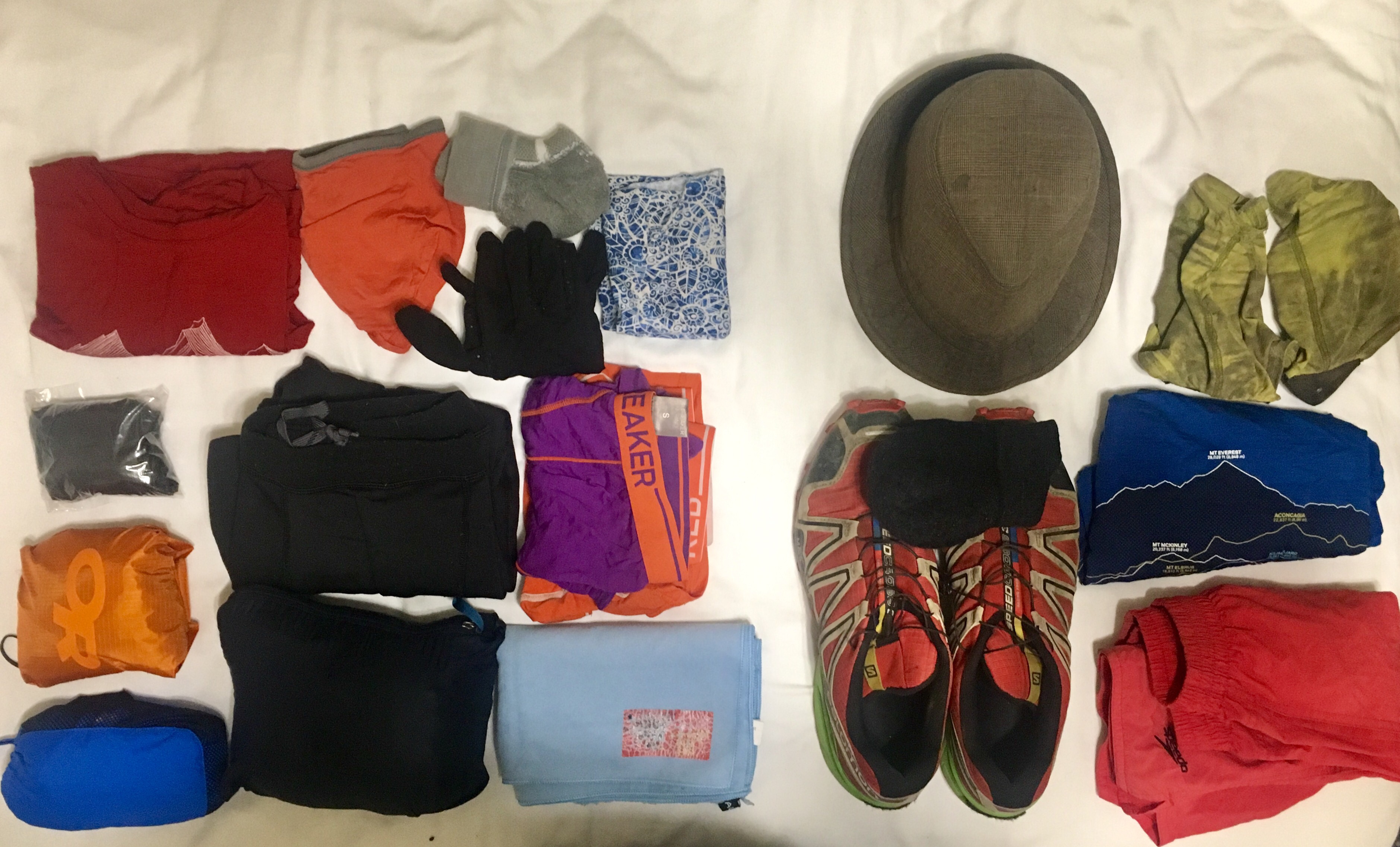
Medics and Hygienics
Try to buy the smaller sizes. No need to carry 200ml of something that will last for 2 month. Resupply more often. I have seen carrying regular bottles of everything ending up with 3-4kg of liquids 🙈
Small and cut off tooth brush + toothpaste
Small container of biodegradable washing lotion
Desinfectional gel
Contact lenses and cleansing fluid (extra pair and a few daily lenses in case of an eye infection)
Nail clipper
Coam for my beard – therefore no razor 😂
Toilet paper
Painkillers
Cream for eye infection – happens quickly with contact lenses
Couple desinfectional tissues
Small roll of plaster tape
Antihistamines
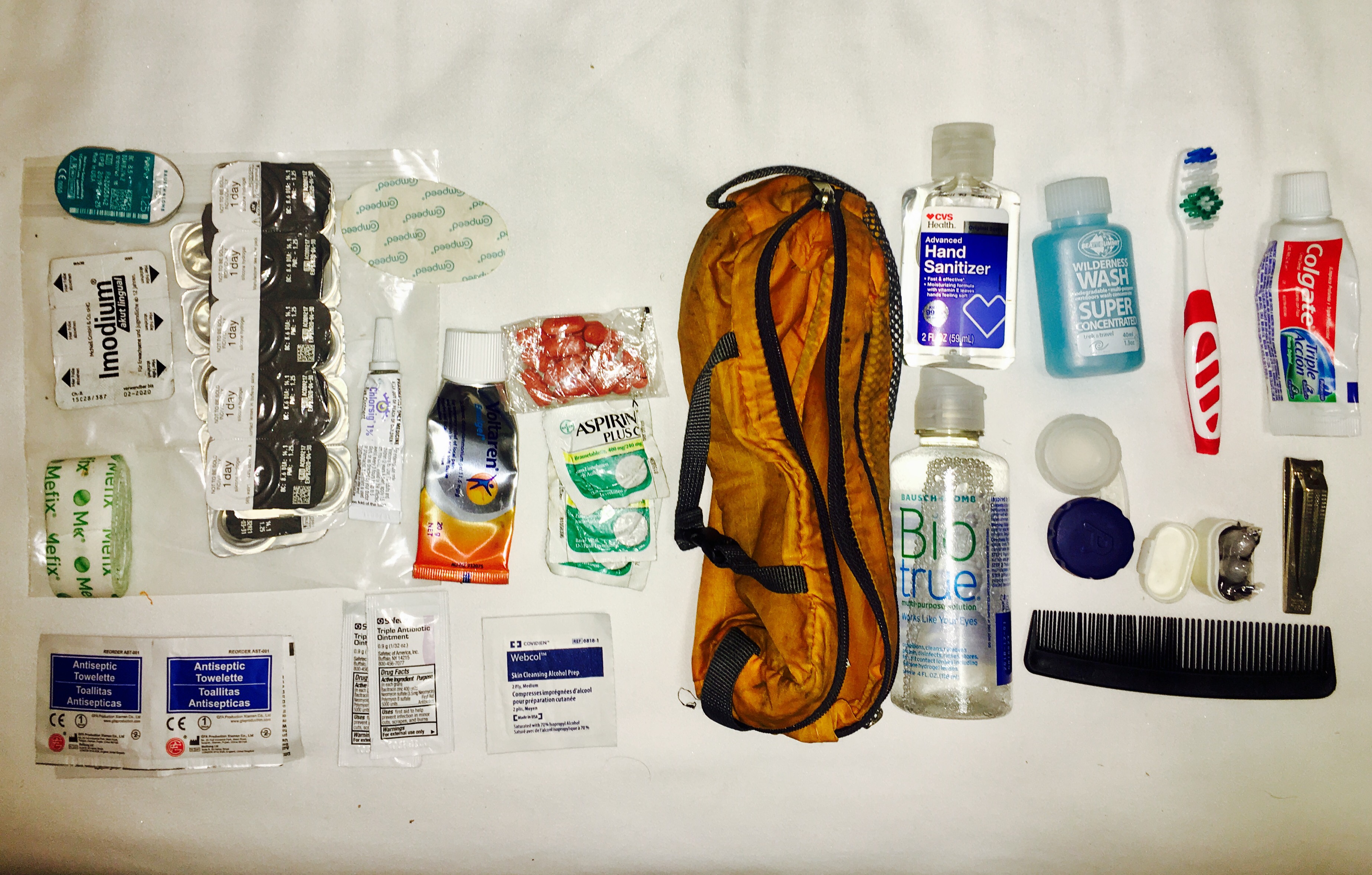
Repair kit, electronics, navigation and other stuff
Minimal as well. Tape and cable ties will fix most problems temporarily or even long term. For the electronics I only carry my iPhone for backup navigation (bad weather, emergency situations) and to write the blog.
Sufficient amount of ductape wrapped around my trekking poles so I don’t have to carry it in the backpack – it fixes everything: equipment and also small injuries.
An Opinel Knife
A stripe of special waterproof repair tape for tents, rain jackets and repair kit for my air mattress
Cable ties
One piece of string
USB charger with double port
iPhone in waterproof Lifeproof Case- also my fall back navigation and emergency (if I have reception) device
Powerbank for two charges
Headlamp for hikes during night time and everything else when it’s dark
A fully functioning light weight compass and paper maps (in a waterproof transparent cover attached with a string to the backpack)
Hiking poles which I always use. It’s said that they save you up to 30% of energy in your legs since you use your upper body which normally is not used when hiking

My only luxury equipment – my camera
I tried to find a compromise between a full DSLR camera which is to bulky and heavy and a smaller one which will still give me a very high quality. After testing it for 1.5 years now I can say that I am extremely happy. It only weighs 900 gr. including the lense which is significantly less than a comparable SLR. And I also finally found a way to attach my camera to my backpack so that I can always use it without taking my backpack off or it dangling around and being annoying. The Peak Design clip straps the camera to your shoulder belt. It’s fixed, secured and you still have easy access to it.
Olympus OMD EM10II with 14-150mm lense (converts to 28-300 in traditional logic)
3 batteries, 4 SD memory cards, cleaning wipes and three grey filters
Camera battery charger
Peak Design Pro clip for the backpack
Peak Design rain cover

If you consider buying any gear from Peak Design for your camera – they asked me to join their affiliate program. So just use this link here and you will get a 10% discount on your purchase: https://www.peakdesign.com?acc=470
What else is important?
I do pack everything in waterproof sacks or zip-locks. It a) helps to keep order and easy access and it prevents stuff from getting wet! Very important.
The entire gear list in a quick overview:
I am wearing my t-shirt, shorts, one pair of socks, trail runners, gaiters and I am having my trekking poles in use. The rest is in my bag unless the weather changes and I put some of the stuff on.
- Backpack Hyperlite Mountain Gear 2400 Southwest
- Tent: MSR Hubba NX Solo
- Sleeping bag Western Mountaineering
- Silk liner from Friluft
- Sleeping mattress Thermarest NeoAir XLite
- Cooking stove from Olympus
- Cooking pot from Trangia
- Spork
- Water filter + 1.5l water bottle
- 1l water bottle
- 3l camel bag
- Rain jacket
- Rain skirt
- Rain pants
- Patagonia Prima Loft Gold jacket
- Marmot thermal pants
- 1 extra Icebreaker merino t-shirt
- 1 thin Icebreaker merino hat
- 1 Buff (neck gaiter)
- 1 pair of Icebreaker mernio gloves
- Sun hat
- 2 pair of Icebreaker merino underwear
- 1 pair of extra socks
- Small microfiber towel
- Small and cut off tooth brush + toothpaste
- Small container of biodigradable washing lotion
- Desinfectional gel
- Contact lenses and clensing fluid (extra pair and a few daily lenses in case of an eye infection)
- Nail clipper
- Comb for my beard – therefore no razor 😂
- Toilet paper
- Painkillers
- Cream for eye infection – happens quickly with contact lenses
- Couple desinfectional tissues
- Small roll of plastertape
- Antihistamines
- Ductape
- Opinel Knive
- A stripe of special waterproof repair tape
- Cable ties
- One piece of string
- USB charger with double port
- iPhone
- Powerbank for two charges
- Headlamp
- Olympus OMD EM10II with 14-150mm lense (converts to 28-300 in traditional logic)
3 batteries, 4 SD memory cards, cleaning wipes and three grey filters
Camera battery charger - Peak Design Pro clip for the backpack
- Peak Design rain cover
- 4 different pack and dry sacks
- Hiking poles aluminium
- Sunscreen & chapstick
Related Posts
1. September 2016
Golden Ears. A power hike with fantastic views.
8. May 2016
Rest days in Ararimu
4. April 2016
Day 67 – Whanganui River; the big rain out
1 Comment
Leave a Reply to Barbara Cancel reply
This site uses Akismet to reduce spam. Learn how your comment data is processed.

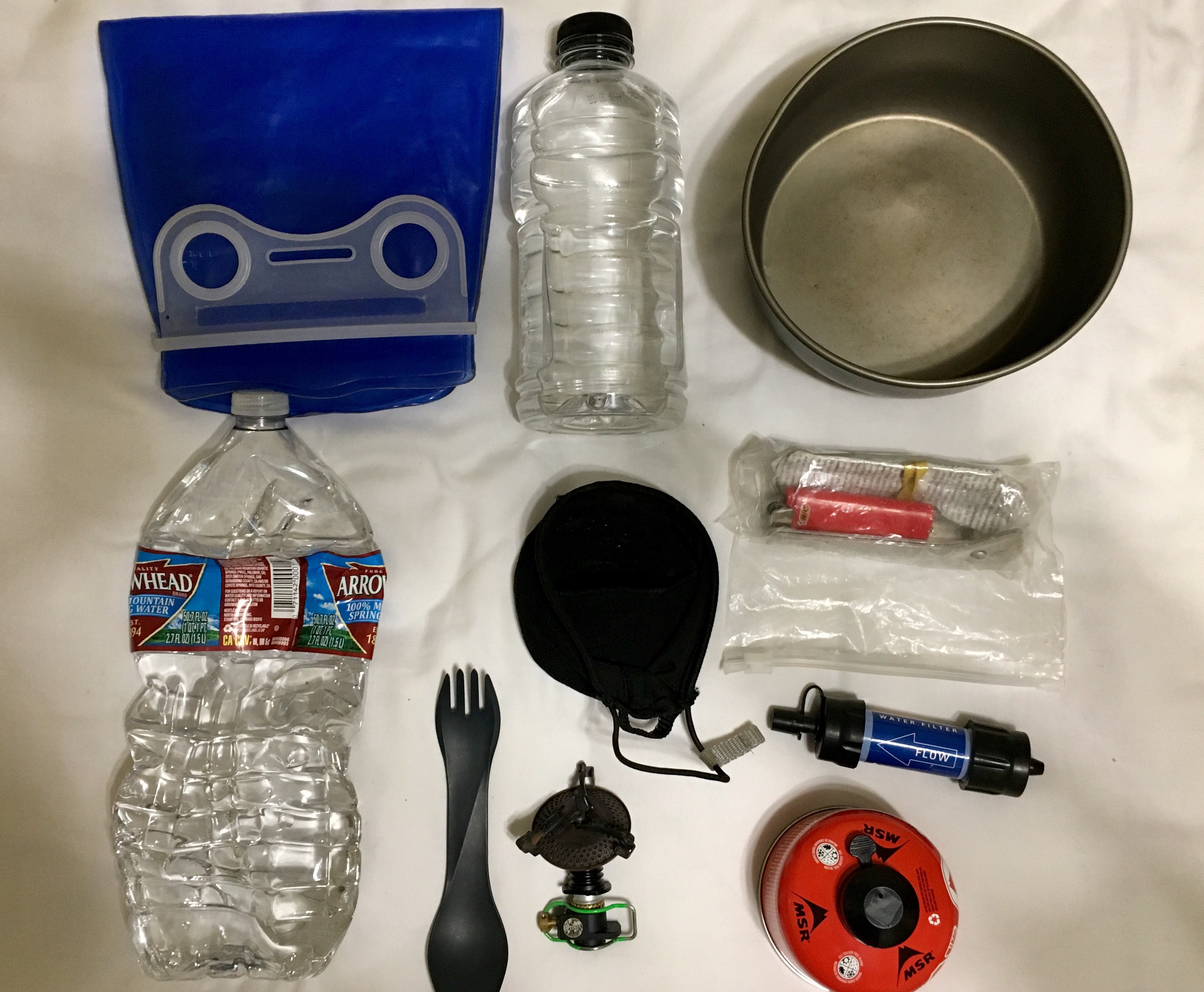
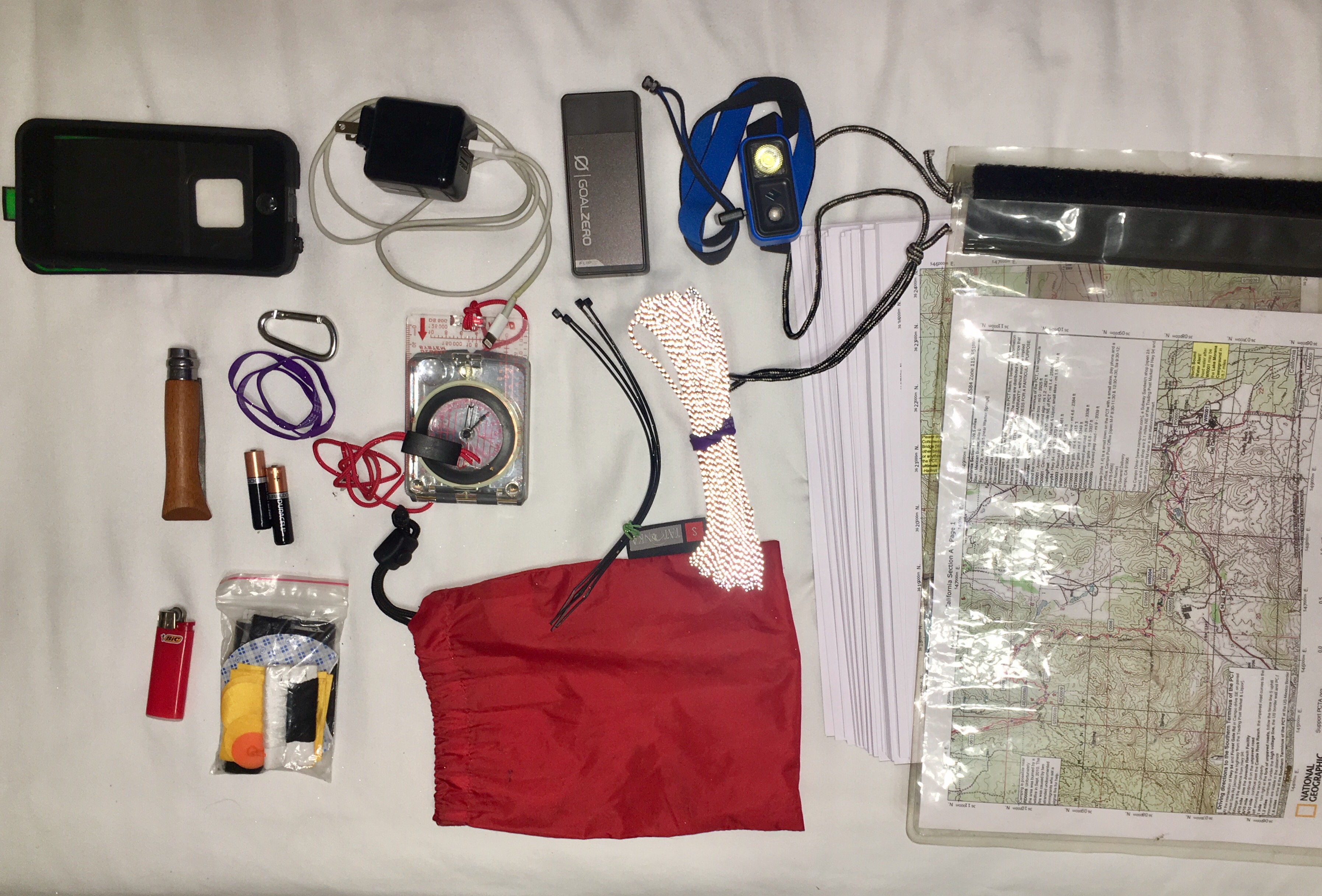

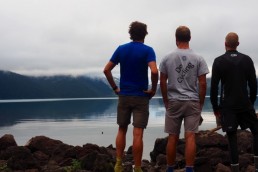
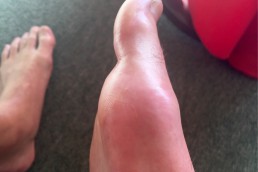


Wow!!! this is an amazing site and a wonderful pool full of inspiring ideas …. thanks for sharing your bag packer list with the world and I am sure I will need it one day. Always safe journey and good health. Happiness comes for free then. Barbara